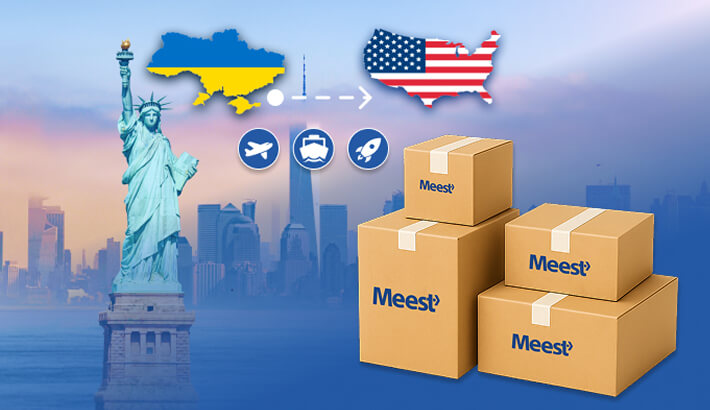


Delivered Duty Paid (DDP) vs. Delivered Duty Unpaid (DDU): What's the Difference?
Sending items is more than just packaging them and the latter receiving them. It also includes filling out forms, collecting documentation, and paying the fees. Understanding your responsibilities as a sender is vital when taking part in international shipping, so you can avoid disruptions, confusion, and unwanted returns.
Delivered Duty Paid (DDP) or Delivered Duty Unpaid (DDU) are the two terms any sender should know. They clearly establish who has to pay the cost and what the risks of not doing so are. Let’s unpack both and understand which one is more suitable for you.
What is Delivered Duty Unpaid (DDU)?
DDU, or Delivered Duty Unpaid, means that the sender is the one paying for the item delivery in the country of destination. However, you won’t be paying taxes, duties, or customs clearance under DDU — the recipient does that.
It’s important to note that the current Incoterms no longer feature DDU. Instead, a new term, DAP (Delivered-At-Place), is recognized internationally. Some carriers still use DDU, but it’s no longer mentioned in official contracts.
In this case, the seller has to:
- Collect documentation and proceed with customs clearance for export.
- Transport the items to the buyer.
- Pay for transit to the dedicated delivery point.
You will not have to pay anything other than for delivery. The sender also doesn’t have to manage any delays or fees caused by import customs clearance. Once the goods have arrived in the country of destination, the buyer assumes responsibility for fees such as import duties, taxes, VAT, or customs clearance costs, and further transportation from the delivery point. Some recipients might be surprised by extra costs and reject the package under DDU.
What is Delivered Duty Paid (DDP)?
DDP, or Delivered Duty Paid meaning states that the sender is responsible for most of the shipping chores. Under DDP, they have to prepare all documentation, pay all fees and taxes, work with carriers to clear customs on export and import, and deliver the item to the buyer. The latter has to receive the parcel, and that’s their only responsibility. Modern courier services, such as Meest, offer DDP to their clients in some countries.
The seller has to:
- collect export documents and licenses;
- deliver the package to the place named by the buyer, including air or sea freight and transportation within the country;
- clear import customs, pay for duties, VAT, and handling fees;
- bear full risk before delivery.
In this case, the seller is dealing with all the logistics, and the buyer shifts all their responsibility to them.
DDP vs. DDU: A Head-to-Head Comparison
DDP and DDU/DAP are two opposites in the world of international logistics. Depending on the one you pick, either you will be carrying the burden of paying and managing the whole process, or the recipient will handle most of it for you.
If you choose DDU, you’ll be responsible for delivering the items, but you won’t have to pay any fees or taxes. The recipient will also have to handle imports and risks related to the process. Customs will only release the shipment once the recipient pays the fees.
Under Delivered Duty Paid Incoterms rules, the sender does all the work. You pay duties, taxes, fees, and manage the export and import, all until the items are at the destination. The recipient just has to receive the package.
The first option is not as demanding for the sender, and you might lean towards that choice at first. Yet, the recipient wouldn’t want to face surprise fees upon delivery, so it creates uncertainty for them, especially if they are ordering from you for the first time.
The second option is more burdensome for senders, but it can instantly increase orders, as the recipient knows the cost right away and doesn’t have to manage imports. In that case, the sender has to know import and customs rules to avoid any delivery issues.
Pros and Cons for Your Business
Although it seems like an easy choice at first, it’s essential to compare DDU and DDP from the sender’s standpoint to thoroughly evaluate both. Below, we present the advantages and disadvantages of both.
Advantages of DDU/DAP
With DDU, the sender doesn’t have to worry about overseas regulations, such as import rules, taxes, or customs. Therefore, they only have to handle the process in their country, avoiding potential mistakes and delays in the country of destination.
If you don’t have a lot of financial resources, you can choose DDU/DAP for fewer upfront requirements. With this option, you don’t need to pay for import duties.
When the items reach the recipient’s country, they have transparency and control over the delivery process and can use their own customs clearance approach — a huge deal for some individuals. They also see a cheaper cost of the original item, as it excludes import tax.
Disadvantages of DDU/DAP
Since the recipient is responsible for half of the process, they might not want to follow through and order the items from the sender who works under DDU.
The recipient might face surprise costs or even delays at customs, causing the shipments to get stuck or even rejected. If they refuse to pay, the packages may be returned, which triggers additional shipping costs and eventually harms the sender’s reputation.
Advantages of DDP
DDP appears as more seamless for the customer. Even if the seller has to assume most responsibilities, buyers see it as a whole successful experience without surprise charges and hold-offs. Naturally, working with DDP makes your e-commerce business stand out in your market.
Disadvantages of DDP
At the same time, DDP has its disadvantages. For instance, sellers are risking delivery issues unless they know all import rules or work with a responsible 3PL business like Meest. They also have to pay import duties and fees upfront, including all potential miscalculations and penalties.
Which Should You Choose? DDP or DDU/DAP?
DDU vs. DDP depends on your market, capabilities, and other factors. Let’s unpack potential scenarios and weigh different options.
When to Use DDU/DAP
As a sender, you’d want to choose DDU if you have minimal knowledge of international import processes. Moreover, if a recipient is a business, a supplier, or an individual familiar with the process, it’s best to let them manage everything in the country of destination.
If you prefer to minimize the financial cost of operations in import duties, or the margins in your product can’t shift to account for import duties, pick DDU.
When to Use DDP
DDP is a viable choice when you strive for a premium experience for your recipients, since you will be fully responsible for the whole shipping process. If you’ve got a lot of orders, and you have enough resources to manage imports, you should also choose this option.
In case you collaborate with reliable partners, such as international courier services by Meest, and you can easily work with the import side without any delays or complications, DDP is great for a seamless buyer experience.
Making the Decision
The way you deliver your items dictates whether your clients will return to your storefront and purchase again. So, take your time to decide and follow these steps:
- Once you decide to expand overseas, research the import market first. Find out what the customs regulations are, how expensive the duties and taxes can be, and the documentation you need to provide to clear customs.
- Use online tools to count the average estimate for import duties. If they are low and easily calculated, you can select DDP.
- Evaluate your resources and possibilities, and see if you’re ready to handle all import processes.
- Research your recipient base and find out more about their preferences. This will manage your expectations and help establish a good buyer experience.
- Measure how profitable both choices can be for your niche. While DDP grows shopper satisfaction, DDU preserves margin.
- Let the recipient make the choice, if that’s possible. Many senders offer this option at checkout.
Remember that the difference between DDU and DDP is huge; you don’t have to stick to either or, and can switch at any time. Always try the approach in one or two markets first, and then measure the profits. Then, you’ll be able to switch or refine your approach, if needed.
Conclusion
Delivered Duty Paid and Delivered Duty Unpaid are two opposite sides of the sender and recipient experience. In the first case, the sender is responsible for everything, including export and import costs, documentation, and customs clearance. Yet, DDP offers more seamless delivery to the buyer.
DDU, on the other hand, places half of the burden on the recipient. They handle everything once the items reach the country of destination. They might be hit with surprise payments and slower delivery, especially if they are not familiar with the import process.
The choice you make depends on the scale, capabilities, and your goods. Most senders offer both, with recipients choosing what’s best for them.

















